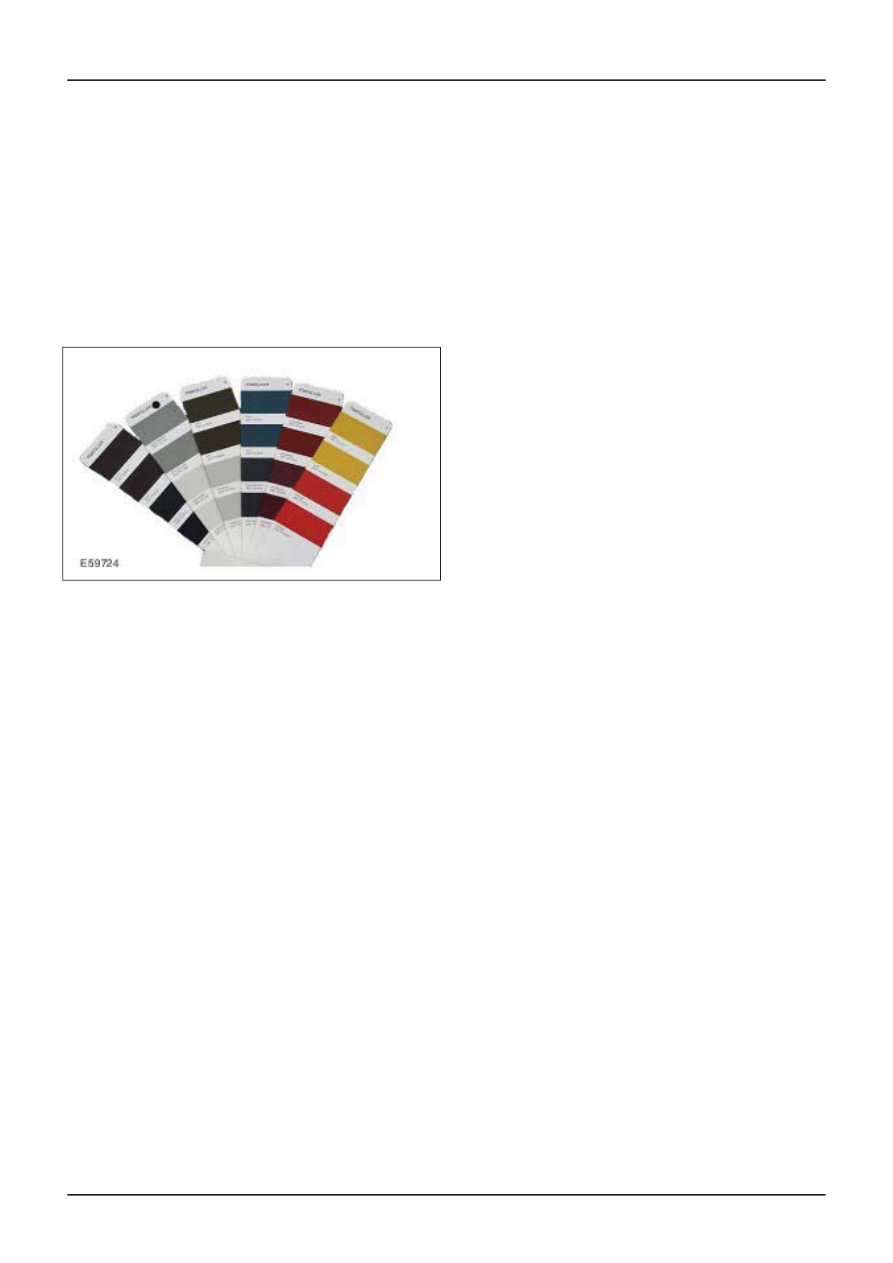Ford Focus RS (2011 year). Manual - part 141

Matching tinted filler to the color code
NOTE: Color samples must always be made from
the same materials as the subsequent repair
painting. Perform color shade matching in the fully
hardened state, in natural light or under suitable
artificial light.
Various tinted fillers are used during factory
painting. In order to achieve the exact color shade
of the factory applied paint, attention should be
paid that the correctly matched fillers are used.
The repair paint manufacturers offer suitable
precolored primers. The use of filler color cards
allows the matching color shade to be determined.
G506676en
501-36-
64
Paint - General Information
501-36-
64
DESCRIPTION AND OPERATION